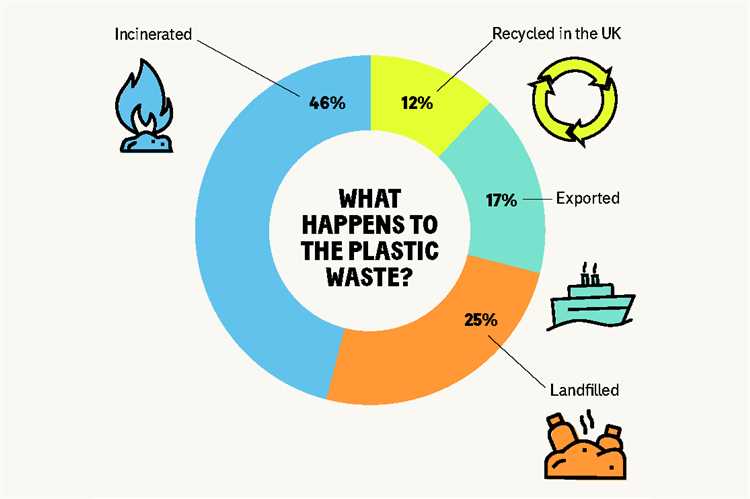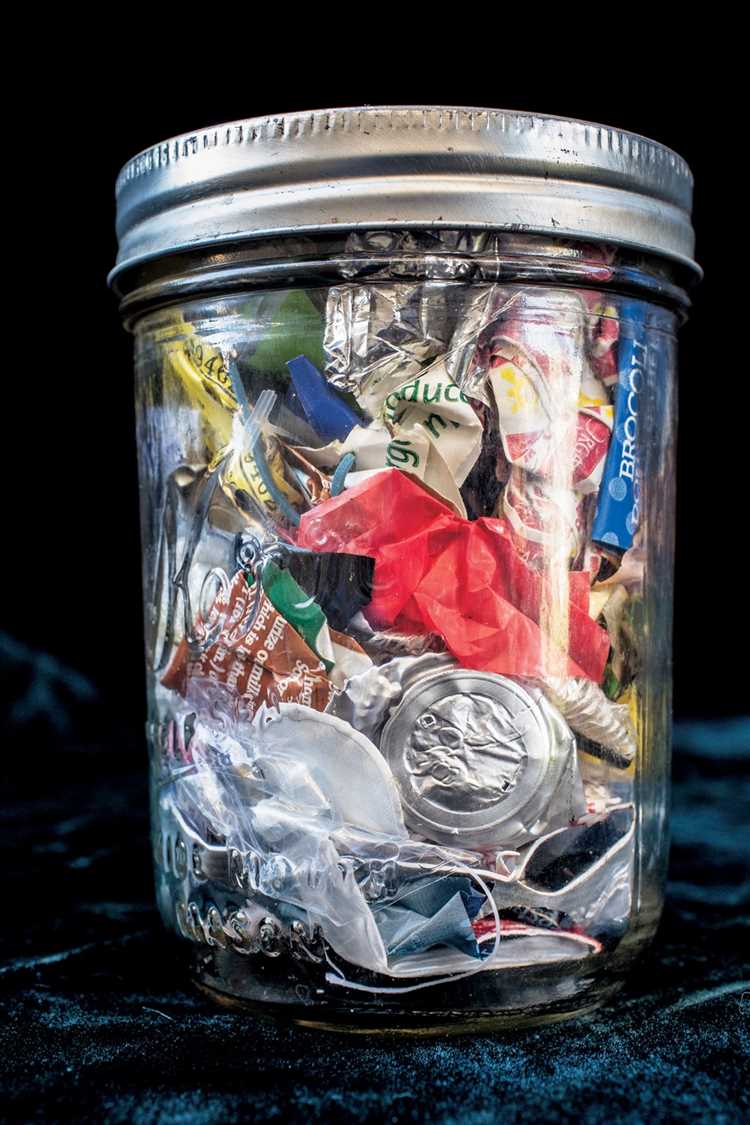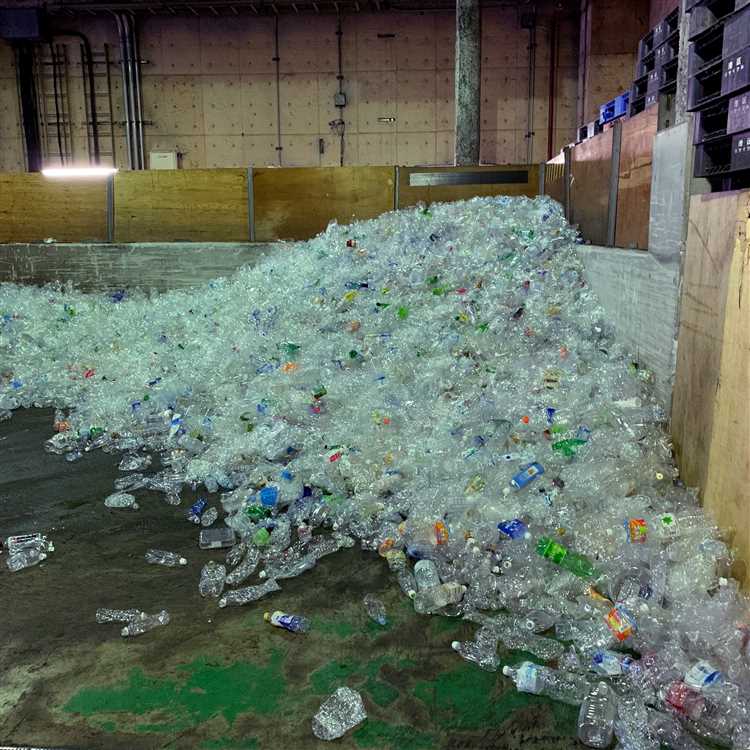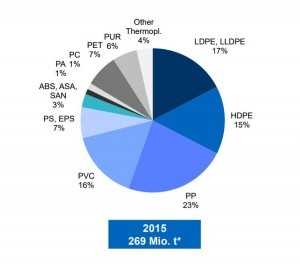
We live in a world where plastic is everywhere – from our packaging to our electronics. But what happens to all that plastic when we no longer need it? Many people are unaware of the environmental impact of their plastic waste and the choices they have when it comes to disposing of it. Two common methods of dealing with plastic waste are burning it and recycling it. In this article, we will explore the pros and cons of each method to determine which is the better option for our planet.
When plastic is burned, it releases a toxic cocktail of chemicals into the air, including dioxins, furans, and heavy metals. These pollutants can have serious health effects on both humans and wildlife. Additionally, burning plastic contributes to air pollution and climate change. On the other hand, recycling plastic allows us to reduce the demand for raw materials and conserve energy and resources. By recycling, we can minimize the environmental impact of plastic waste and help create a more sustainable future.
However, recycling isn’t a perfect solution either. The process of recycling plastic can be complicated and costly. Sorting and cleaning the different types of plastic can be time-consuming and require specialized equipment. Furthermore, not all plastic can be easily recycled, and some types of plastic can only be recycled a limited number of times before they become unusable. Despite these challenges, recycling offers a viable alternative to burning plastic and can significantly reduce the amount of waste ending up in landfills or being incinerated.
In conclusion, the burning of plastic may seem like a convenient way to get rid of our waste, but it comes at a high cost to our health and the environment. Recycling, on the other hand, allows us to reduce pollution, save resources, and create a more sustainable future. While it may not be a perfect solution, it offers a better alternative to the detrimental effects of burning plastic. It’s time we start making conscious choices about how we dispose of our plastic waste and opt for recycling whenever possible.
- The Impact of Burning Plastic
- Air Pollution
- Soil and Water Contamination
- Environmental and Health Hazards
- Contributing to Air Pollution
- Impact on Human Health
- Environmental Impact
- Effects on Wildlife and Marine Life
- Impact on Marine Life
- Impact on Terrestrial Wildlife
- The Benefits of Recycling
- Conserving Natural Resources
- Reducing Energy Consumption
- 1. Energy-Efficient Appliances
- 2. Insulation and Weatherproofing
- 3. Renewable Energy Sources
- 4. Smart Energy Management
- 5. Energy-Efficient Lighting
- Preventing Land and Water Contamination
- Recycling as a Solution
- Proper Disposal and Waste Management
- Government Regulations and Policies
- Q&A:
- What are the environmental consequences of burning plastic?
- Is recycling a better option than burning plastic?
- How does recycling plastic help in conserving natural resources?
- What are the benefits of recycling plastic?
The Impact of Burning Plastic

Burning plastic has a significant negative impact on the environment and human health. When plastic is burned, it releases toxic chemicals and pollutants into the air, soil, and water.
Air Pollution
One of the main consequences of burning plastic is the release of harmful substances into the air. This includes dioxins, furans, and volatile organic compounds (VOCs) which are known to be carcinogenic. These pollutants can be inhaled by humans and animals, leading to respiratory problems, cardiovascular diseases, and even cancer.
Soil and Water Contamination

When plastic is burned in open fires or unregulated incinerators, the ash and residues often contain dangerous chemicals. These substances can contaminate the soil and leach into nearby water bodies, posing a threat to plants, animals, and the overall ecosystem. Additionally, the release of heavy metals from burning plastic, such as lead and mercury, can have long-term impacts on soil fertility and water quality.
It is important to note that burning plastic also contributes to climate change. The combustion of fossil fuel-based plastics releases greenhouse gases like carbon dioxide, contributing to the warming of the planet and the depletion of the ozone layer.
Furthermore, burning plastic waste is a wasteful practice when compared to recycling. Instead of recovering valuable resources and reducing the demand for new materials, burning plastic simply destroys these resources and perpetuates the cycle of extraction and production.
Overall, the impact of burning plastic is far-reaching, affecting not only our immediate surroundings but also the global environment. It is crucial to promote recycling and other sustainable waste management practices to minimize the detrimental effects of burning plastic.
Environmental and Health Hazards
When it comes to burning plastic, there are several significant environmental and health hazards that need to be considered. Burning plastic releases toxic fumes and pollutants into the air, contributing to air pollution and climate change. These emissions can contain hazardous chemicals such as dioxins, furans, and volatile organic compounds, which can have detrimental effects on both the environment and human health.
In addition to air pollution, burning plastic waste also leads to soil and water contamination. The ash leftover from burning plastic can contain heavy metals and other harmful substances that can leach into the ground and contaminate nearby water sources. This contamination can have long-lasting effects on ecosystems, harming plants, animals, and potentially even humans who rely on these resources for survival.
On the other hand, recycling plastic is a much safer and environmentally-friendly option. By recycling plastic, we can reduce the amount of plastic waste that ends up in landfills or incinerators, conserving natural resources and reducing greenhouse gas emissions. Recycling also helps to reduce air and water pollution associated with the production and disposal of plastic, contributing to a cleaner and healthier environment.
| Environmental Hazards | Health Hazards |
|---|---|
| Air pollution | Respiratory issues |
| Climate change | Cancer risks |
| Soil contamination | Hormonal disruption |
| Water contamination | Neurological disorders |
Overall, it is clear that burning plastic poses significant environmental and health risks, while recycling plastic is a much safer and sustainable solution. By choosing to recycle instead of burning, we can help protect our environment and our health for future generations.
Contributing to Air Pollution
A major concern with burning plastic is the significant contribution it makes to air pollution. When plastic is burned, it releases a range of harmful gases and toxic substances into the atmosphere. These gases include carbon monoxide, nitrogen oxides, and sulfur dioxide, which are known to be harmful to human health and contribute to the formation of smog.
Impact on Human Health
The release of these harmful gases from burning plastic can have serious consequences for human health. Carbon monoxide, for example, is a colorless and odorless gas that can be extremely harmful when inhaled. It binds to hemoglobin in the bloodstream, reducing the amount of oxygen that can be transported to vital organs. Prolonged exposure to carbon monoxide can lead to symptoms such as headaches, dizziness, and eventually can even be fatal.
In addition to carbon monoxide, nitrogen oxides and sulfur dioxide can contribute to respiratory problems and worsen existing respiratory conditions such as asthma. These gases can also react with other chemicals in the atmosphere to form particulate matter, which can be inhaled and cause further damage to the respiratory system.
Environmental Impact
Burning plastic not only affects human health but also has a significant impact on the environment. The release of gases and toxic substances can cause air pollution, leading to smog and reduced air quality. This can have negative consequences for plant and animal life, as well as the overall ecosystem.
Furthermore, burning plastic contributes to the production of greenhouse gases, such as carbon dioxide and methane, which are major contributors to climate change. These gases trap heat in the atmosphere, leading to global warming and the associated impacts, including rising sea levels, extreme weather events, and changes in ecosystems.
It is clear that burning plastic has severe consequences for both human health and the environment. By opting for recycling instead, we can significantly reduce air pollution and its harmful effects on our planet.
Effects on Wildlife and Marine Life
Burning plastic has significant negative effects on wildlife and marine life. When plastic is burned, it releases toxic chemicals and pollutants into the environment. These pollutants can contaminate water sources, including rivers, lakes, and the ocean, posing a threat to the animals that rely on these habitats.
Impact on Marine Life
Marine life is particularly vulnerable to the negative effects of burning plastic. The toxic chemicals released during the burning process can accumulate in the bodies of marine organisms through bioaccumulation and biomagnification. These chemicals can disrupt the hormonal systems of marine animals, impair their reproductive abilities, and even cause death.
Additionally, plastic waste that is not properly disposed of can end up in the ocean, where it poses a direct threat to marine animals. Many marine creatures, including turtles, dolphins, and seabirds, mistake plastic debris for food and ingest it. This can lead to intestinal blockages, malnutrition, and suffocation, ultimately causing a decline in their population numbers.
Impact on Terrestrial Wildlife

Terrestrial wildlife is also negatively impacted by the burning of plastic. The release of toxic pollutants into the air can contaminate plants and vegetation, which are essential food sources for many animals. Ingesting these contaminated plants can have detrimental effects on their health, leading to impaired immune systems, reproductive issues, and overall population decline.
Furthermore, the pollution caused by burning plastic can disrupt ecosystems and habitats, leading to the displacement or extinction of certain species. The loss of biodiversity can have far-reaching consequences for the balance of ecosystems and can ultimately impact human populations as well.
| Effects on Wildlife and Marine Life | Burning Plastic | Recycling |
|---|---|---|
| Marine Life | Release of toxic chemicals and pollutants through burning and ingestion of plastic debris. | Reduces pollution and harmful effects on marine life by preventing plastic waste from entering the ocean. |
| Terrestrial Wildlife | Contamination of plants and vegetation, leading to health issues and loss of biodiversity. | Preserves natural habitats and food sources for terrestrial wildlife by reducing the need for new plastic production. |
The Benefits of Recycling
Recycling is a vital practice that brings a host of benefits to both the environment and society. By diverting waste from landfills and incinerators, recycling plays a crucial role in conserving natural resources and reducing pollution.
1. Conservation of Natural Resources: Recycling helps to reduce the need for extracting and processing raw materials, such as trees and minerals. By reusing materials, we can conserve resources, protecting natural habitats and biodiversity.
2. Reduction of Pollution: Manufacturing products from virgin materials often involves harmful chemical processes and releases significant amounts of greenhouse gases and pollutants into the environment. Recycling reduces the demand for new materials, thus reducing pollution associated with their extraction, production, and transportation.
3. Energy Savings: Recycling materials requires less energy compared to extracting and processing new raw materials. The energy saved through recycling can be used for other purposes or to power homes and businesses, reducing reliance on fossil fuels and lowering carbon emissions.
4. Job Creation: The recycling industry creates jobs in numerous sectors, from collection and sorting to processing and manufacturing. These jobs not only contribute to the economy but also support local communities and provide opportunities for employment.
5. Waste Reduction: Recycling helps to reduce the amount of waste sent to landfills and incinerators, prolonging the lifespan of these facilities. This also reduces the potential for harmful substances and pollutants to enter our soil and water systems through leachate and emissions.
6. Education and Awareness: By promoting recycling, we can raise awareness about the importance of sustainable practices and environmental stewardship. Recycling encourages responsible consumption, waste reduction, and the adoption of greener lifestyles.
Overall, recycling offers numerous benefits that contribute to a healthier planet and a more sustainable future. It not only conserves resources, reduces pollution, and saves energy but also creates jobs, reduces waste, and promotes environmental awareness. Encouraging individuals and communities to recycle is crucial in realizing these benefits and working towards a more circular and sustainable economy.
Conserving Natural Resources
Conserving natural resources is essential for the long-term sustainability of our planet. Burning plastic contributes to the depletion of natural resources, as it requires the extraction of fossil fuels such as oil and gas. These resources are finite and non-renewable, meaning that once they are gone, they cannot be replaced.
On the other hand, recycling plastic helps to conserve natural resources by reducing the demand for new raw materials. When plastic is recycled, it can be converted into new products without the need for additional extraction of resources. This decreases the strain on our natural environment and helps to preserve valuable resources.
In addition to reducing the use of fossil fuels, recycling plastic also conserves other natural resources such as water. The production of plastic requires significant amounts of water, both for the extraction of raw materials and the manufacturing process itself. By recycling plastic, we can reduce the amount of water used in the production of new plastic products.
Furthermore, recycling plastic helps to protect natural habitats and ecosystems. The extraction of resources for plastic production often results in the destruction of forests and other valuable natural areas. By recycling plastic, we can minimize the need for such extraction and preserve these important ecosystems.
Overall, conserving natural resources through recycling plastic is a better option compared to burning it. Not only does recycling contribute to the reduction of fossil fuel consumption and the preservation of valuable resources, but it also helps to protect the environment and maintain the balance of natural ecosystems.
Reducing Energy Consumption
Reducing energy consumption is a key factor in both burning plastic and recycling. By conserving energy, we can minimize the negative impacts on the environment and work towards a sustainable future. Here are some key steps to reducing energy consumption:
1. Energy-Efficient Appliances
One way to reduce energy consumption is by using energy-efficient appliances. These appliances are designed to use less electricity, helping to lower overall energy consumption. Look for appliances with an Energy Star rating to ensure they meet energy efficiency standards.
2. Insulation and Weatherproofing
Proper insulation and weatherproofing of buildings can significantly reduce energy consumption. Good insulation helps to retain heat in the winter and keeps buildings cooler in the summer, thus reducing the need for excessive heating or cooling.
3. Renewable Energy Sources
Transitioning to renewable energy sources, such as solar or wind power, can greatly reduce dependence on fossil fuels and lower energy consumption. Installing solar panels or wind turbines can provide clean and sustainable energy for both residential and commercial purposes.
4. Smart Energy Management
Using smart energy management systems can help to optimize energy use. These systems allow for remote monitoring and control of energy-consuming devices, enabling users to identify and minimize energy waste.
5. Energy-Efficient Lighting
Switching to energy-efficient lighting options, such as LED or CFL bulbs, can significantly reduce energy consumption. These bulbs use less electricity and have a longer lifespan compared to traditional incandescent bulbs.
In conclusion, reducing energy consumption plays a crucial role in both burning plastic and recycling. Implementing energy-efficient practices and utilizing renewable energy sources can help mitigate the environmental impacts and contribute to a more sustainable future.
Preventing Land and Water Contamination
Contamination of land and water resources is a significant environmental concern associated with the burning of plastic waste. When plastic is burned, it releases toxic chemicals into the air, which can then settle onto land and water bodies. These toxic chemicals can contaminate the soil and water, posing serious health risks to humans, animals, and ecosystems.
Recycling as a Solution
One effective way to prevent land and water contamination is to promote recycling. When plastic waste is recycled instead of burned, it avoids the release of harmful toxins into the environment. Recycling allows plastic to be transformed into new products or materials, reducing the demand for virgin materials and the need for burning plastic waste.
By recycling plastic, we can reduce the amount of plastic waste that ends up in landfills, where it can take hundreds of years to decompose. This helps prevent the accumulation of plastic waste in the environment, reducing the risks of contamination of land and water resources.
Proper Disposal and Waste Management
In addition to recycling, proper disposal and waste management practices are crucial in preventing land and water contamination. Implementing effective waste management systems, such as separating different types of waste and providing recycling facilities, can ensure that plastic waste is disposed of correctly.
Furthermore, raising awareness about the importance of proper waste disposal among individuals and communities is essential. Education and outreach programs can help people understand the potential consequences of improper disposal and encourage them to adopt responsible waste management practices.
Government Regulations and Policies
Government regulations and policies play a critical role in preventing land and water contamination from plastic waste. By implementing strict regulations on the burning of plastic waste and promoting recycling initiatives, governments can help reduce the environmental impact of plastic waste disposal.
Government agencies can also incentivize businesses and industries to adopt sustainable practices and invest in recycling infrastructure. By providing financial incentives and support, governments can encourage the development of innovative recycling technologies and the establishment of recycling facilities.
Conclusion
Preventing land and water contamination caused by burning plastic waste requires a multi-faceted approach. Promoting recycling, implementing proper waste management practices, and enforcing government regulations are all crucial in combating this environmental issue. By collectively taking these steps, we can protect our land and water resources from the harmful effects of plastic waste and ensure a healthier and sustainable future.
Q&A:
What are the environmental consequences of burning plastic?
Burning plastic releases toxic chemicals and pollutants into the air, contributing to air pollution and climate change. It also releases harmful dioxins and furans, which can harm human health and contaminate soil and water.
Is recycling a better option than burning plastic?
Yes, recycling is a much better option than burning plastic. By recycling, we can reduce the amount of waste sent to landfills, conserve natural resources, and save energy. Recycling also helps to reduce pollution and greenhouse gas emissions associated with the production of new plastic.
How does recycling plastic help in conserving natural resources?
Recycling plastic helps in conserving natural resources by reducing the need for new raw materials. When we recycle plastic, we can reuse the materials to make new products, which reduces the demand for extracting and processing virgin resources such as crude oil and natural gas.
What are the benefits of recycling plastic?
There are several benefits of recycling plastic. It helps to reduce waste sent to landfills, conserves natural resources, saves energy, and reduces pollution and greenhouse gas emissions. Recycling plastic also helps to create jobs in the recycling industry and promotes a more sustainable and circular economy.